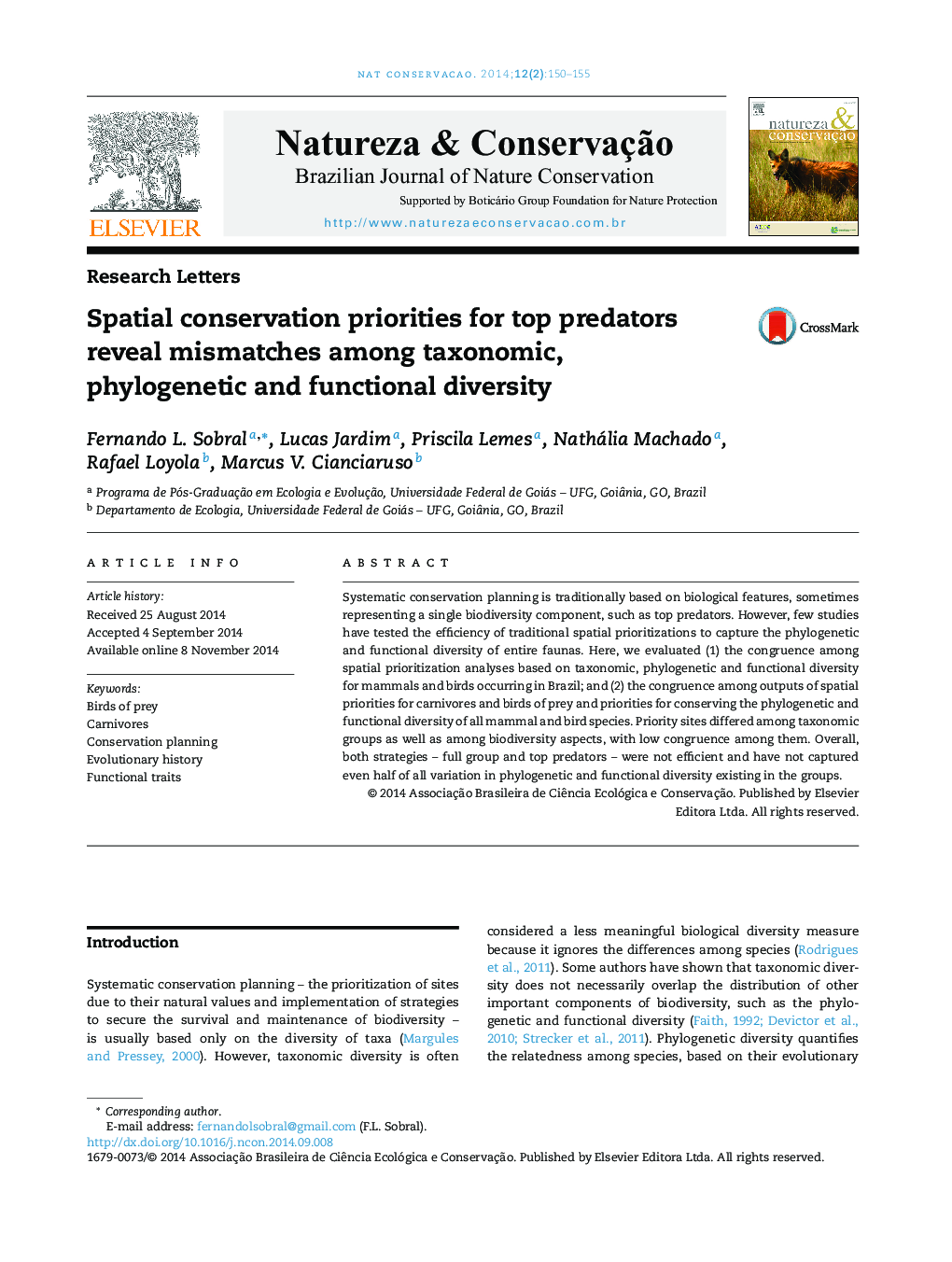| Article ID | Journal | Published Year | Pages | File Type |
|---|---|---|---|---|
| 4400813 | Natureza & Conservação | 2014 | 6 Pages |
Systematic conservation planning is traditionally based on biological features, sometimes representing a single biodiversity component, such as top predators. However, few studies have tested the efficiency of traditional spatial prioritizations to capture the phylogenetic and functional diversity of entire faunas. Here, we evaluated (1) the congruence among spatial prioritization analyses based on taxonomic, phylogenetic and functional diversity for mammals and birds occurring in Brazil; and (2) the congruence among outputs of spatial priorities for carnivores and birds of prey and priorities for conserving the phylogenetic and functional diversity of all mammal and bird species. Priority sites differed among taxonomic groups as well as among biodiversity aspects, with low congruence among them. Overall, both strategies – full group and top predators – were not efficient and have not captured even half of all variation in phylogenetic and functional diversity existing in the groups.
